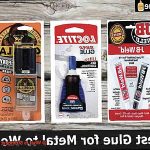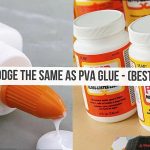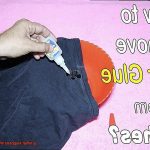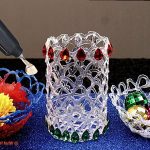Are you a woodworking enthusiast or a DIY hobbyist who loves working with wood? If so, then you know the importance of having a reliable adhesive that can hold your projects together. There are many types of adhesives available, but yellow wood glue is a standout choice for its unique properties and benefits.
So, what makes yellow wood glue different from other types of adhesives? Well, it all starts with its composition and performance. Yellow wood glue, also known as PVA (polyvinyl acetate) glue, is water-based and made from a synthetic polymer that has been modified to enhance its bonding capabilities. It’s non-toxic and dries clear, making it perfect for projects where the adhesive might show.

But what are the advantages of using yellow wood glue? For starters, it has a longer working time compared to super glue or other fast-drying adhesives. This means you can take your time positioning and adjusting the wood pieces before the glue sets. Plus, it has strong initial tack that keeps pieces in place without sliding around.
Yellow wood glue also boasts excellent bonding strength that can withstand heavy objects’ stress without breaking apart. Additionally, it has good moisture resistance, making it ideal for exterior woodwork or humid environments.
In summary, yellow wood glue is an all-purpose adhesive that is easy to work with and provides strong and durable bonds. That’s why both professional woodworkers and DIY enthusiasts alike choose this type of adhesive over others on the market.
What is Yellow Wood Glue?
Contents
If you’re looking to create a woodworking masterpiece, then you need an adhesive that is as strong and reliable as your vision. Enter yellow wood glue, also known as aliphatic resin glue or carpenter’s glue. This popular adhesive is made from synthetic resin and water, making it non-toxic and easy to clean up with just water.
But what really sets yellow wood glue apart is its robust bonding power. When applied correctly, it creates a durable bond that can withstand stress and pressure, making it perfect for furniture making, cabinetry, and other woodworking projects that require a strong adhesive.
Yellow wood glue is also incredibly versatile. It can bond with both porous and non-porous surfaces, including wood, metal, plastic, ceramics, paper, cardboard, and fabrics. This makes it a go-to option for DIY projects that involve different materials.
Moreover, yellow wood glue is easy to work with. It dries clear and can be sanded or painted over once it has dried. Additionally, it has a relatively long working time before it sets, allowing users to adjust their pieces for precision and accuracy.
But what about outdoor projects or items that will be exposed to changing weather conditions? Fear not. Yellow wood glue has a high resistance to heat and moisture, making it an ideal choice for outdoor furniture or projects that may be exposed to the elements.
The affordability of yellow wood glue adds to its appeal as it comes in various sizes ranging from small tubes to large gallon jugs. Plus, it has a long shelf life when stored properly, meaning it can be used for multiple projects over an extended period.
Advantages of Yellow Wood Glue
With so many options available, it can be challenging to determine which one is the best fit. Fortunately, yellow wood glue, also known as PVA glue, has numerous advantages that make it a top choice for woodworkers.
First and foremost, let’s talk about strength. Yellow wood glue forms a robust bond that can withstand stress and pressure. This feature is critical in woodworking projects where the joint needs to be sturdy enough to support weight or pressure. You don’t want your beautiful creation falling apart due to inferior adhesive. The strength of yellow wood glue is unmatched by other adhesives.
Another advantage of yellow wood glue is its water resistance. This type of adhesive creates a waterproof bond between two pieces of wood, making it ideal for outdoor projects exposed to the elements. The water-resistant property ensures that the glue won’t deteriorate over time when exposed to moisture, providing longevity and durability to your project. No need to worry about your hard work getting ruined by the rain or humidity.
The third advantage of yellow wood glue is its ease of use. It dries clear, which makes it perfect for those who want a clean and professional-looking finish. The adhesive can be applied using a brush or roller, and any excess glue can be easily wiped away with a damp cloth before it dries. Plus, yellow wood glue doesn’t require any special equipment or techniques, making it accessible for beginners and experts alike.
Let’s not forget about affordability. Compared to other types of adhesives such as epoxy or cyanoacrylate glue, yellow wood glue is relatively inexpensive. This makes it an accessible choice for both professional woodworkers and hobbyists alike. You can create high-quality projects without breaking the bank.
Strong Bonding Power
This is where yellow wood glue truly shines with its exceptional bonding power.
One of the most significant advantages of yellow wood glue is its ability to create a tight-fitting joint. Unlike other types of glue, it penetrates deep into the wood fibers, filling any gaps and creating a bond that is stronger than the wood itself. This makes it an ideal choice for working with dense or hardwoods, which can be challenging to join using traditional methods such as screws or nails.
In addition to creating a strong bond, yellow wood glue also exhibits excellent resistance to moisture. While other types of glue break down and lose strength when exposed to water, yellow wood glue remains durable even in wet conditions. This makes it perfect for outdoor woodworking projects such as garden furniture or structures that will be exposed to humidity or moisture.
Another advantage of this type of glue is its ease of application. Yellow wood glue dries clear, creating a professional-looking finish. It’s straightforward to apply and doesn’t require any special equipment or techniques, making it a popular choice among both professional and amateur woodworkers alike.
Furthermore, yellow wood glue is relatively inexpensive compared to other types of adhesives, making it an affordable option for projects of all sizes. Its affordability combined with its exceptional bonding power makes it a top choice among woodworkers worldwide.
Versatility
Look no further than yellow wood glue – the ultimate adhesive when it comes to versatility. As an expert in this topic, I can tell you that this glue is a must-have in your toolkit. Here’s why:
Firstly, yellow wood glue is a true all-rounder when it comes to bonding different types of wood. It can handle softwoods, hardwoods, and even plywood with ease. But that’s not all – this glue is also effective at bonding other materials like metal, ceramics, and some plastics. This makes it a go-to choice for many types of projects.
One of the most impressive features of yellow wood glue is its ability to fill gaps in wood joints. This means that if you’re repairing furniture or other wooden objects with gaps in their joints, this adhesive can seep into those gaps and harden, creating a strong bond that holds everything together. This feature alone makes it an essential tool in any woodworking project.
In addition to its gap-filling capabilities, yellow wood glue is also highly water-resistant. Once dry, it creates a waterproof seal that prevents moisture from penetrating the joint. This makes it an ideal choice for outdoor furniture or other items that will be exposed to moisture.
But what really sets yellow wood glue apart from other adhesives is its ease of use. It can be applied with a brush, roller, or spreader, and dries quickly so you can work efficiently. And if you happen to apply too much glue, don’t worry – any excess can be easily wiped away with a damp cloth before it dries.
Easy to Use
If you’re searching for an adhesive that is simple to use, then yellow wood glue is what you need. Whether you are a beginner or an experienced woodworker, this type of PVA glue has several advantages that make it popular among professionals.
One of the primary benefits of yellow wood glue is its extended working time. This means you have more than enough time to make modifications and adjustments before the glue dries. This feature is especially essential for complex woodworking projects or for those just starting in woodworking.
Another perk of yellow wood glue is that it dries clear, making it ideal for projects that need staining or finishing. Unlike other adhesives that leave behind visible residue, yellow wood glue ensures that any excess glue will not be noticeable once it dries.
Moreover, yellow wood glue has good holding strength, forming a strong bond between two pieces of wood once it dries. This feature makes it perfect for projects that will be subjected to stress or weight.
Additionally, yellow wood glue is incredibly forgiving and easy-to-clean if there is any excess before it dries. This means less mess and more time dedicated to your project.
Affordable and Accessible
Look no further than yellow wood glue. This type of glue is a must-have tool in any woodworking arsenal, and as an expert in the field, I can attest to its benefits.

Firstly, one of the biggest advantages of yellow wood glue is its accessibility. It is readily available in most hardware stores and home improvement centers, making it an easy option for both seasoned professionals and DIY enthusiasts. Additionally, it won’t break the bank, as it is relatively affordable compared to other types of wood glue on the market.
But don’t let its affordability fool you – yellow wood glue is still a high-quality adhesive that can provide strong and durable bonds. Its water-based formula allows it to be manufactured at a lower cost compared to solvent-based glues, making it an accessible choice for those on a budget.
Moreover, yellow wood glue boasts excellent versatility. It can be used on a wide range of wood types, including hardwoods, softwoods, and even plywood. This makes it a popular choice for woodworking projects of all kinds. Whether you’re building a sturdy bookshelf or constructing a delicate jewelry box, yellow wood glue has got you covered.
In addition to its affordability and accessibility, yellow wood glue has other notable benefits. It has an extended working time that allows for modifications and adjustments, dries clear for a professional finish, and boasts good holding strength to withstand stress and weight. It’s forgiving and easy-to-clean like a loyal companion.
How to Apply Yellow Wood Glue
Achieving a strong and long-lasting bond with yellow wood glue requires proper application techniques. Here are the steps you need to follow to apply yellow wood glue correctly:
Step 1: Prepare the Surfaces
Before applying the yellow wood glue, ensure that the surfaces to be bonded are clean and free of any debris or dust. Use sandpaper or a damp cloth to remove any impurities from the surfaces. Allow them to dry before moving on to the next step.
Step 2: Apply the Glue
Using a brush or roller, apply a thin layer of yellow wood glue to one of the surfaces you want to bond. Be sure not to apply too much glue as this can lead to excess squeeze-out and potential mess. A little goes a long way.
Step 3: Clamp the Surfaces Together
After applying the glue, press the two surfaces together firmly and evenly. Clamps can be used to hold the pieces in place while the glue dries. This helps ensure a tight bond and prevents any movement between the surfaces.
Step 4: Wipe Away Excess Glue
Check for any excess glue squeeze-out and wipe it away before it dries. Once it dries, it can be difficult to remove and may ruin the appearance of your project. Use a damp cloth or scraper to remove any excess glue while it’s still wet.
Step 5: Allow Time for Drying
Yellow wood glue typically requires at least 30 minutes of clamping time and 24 hours of drying time before the bond is fully set. It is important to allow sufficient drying time before removing the clamps or applying any additional stress to the bond. Patience is key.
Tips for Working with Yellow Wood Glue
Working with yellow wood glue can be a bit tricky if you don’t know the proper techniques. However, with the right preparation and application, you can achieve a strong and long-lasting bond for your woodworking projects. Here are some essential tips to follow:
Prepare Your Surfaces
To ensure a strong bond, it’s crucial to prepare the surfaces that will be glued together. Start by cleaning both surfaces thoroughly with a cloth and removing any debris or dust that may prevent the glue from adhering properly. Make sure the surfaces are completely dry before applying the glue.
Apply the Glue Evenly
When applying yellow wood glue, it’s important to apply it evenly to both surfaces using a brush or roller. Applying too little glue can result in weak joints that can break easily, while using too much glue can create a messy finish. The general rule of thumb is to apply enough glue to cover the surface evenly without overdoing it.
Join the Pieces Together Firmly
After applying the glue, join the two pieces of wood together firmly and ensure that they are aligned properly. Yellow wood glue requires pressure to create a strong bond, so it’s essential to clamp your pieces together as tightly as possible. Use clamps that are appropriate for the size and shape of your project and make sure they are evenly distributed.
Allow Ample Drying Time
Patience is key when working with yellow wood glue. It requires time to dry and cure properly, so be patient and allow ample drying time before removing clamps or handling your project. The drying time can vary depending on the humidity and temperature in your workspace, so follow the manufacturer’s instructions for best results. Rushing the drying process can result in a weak bond.
Sand Off Excess Glue Residue
Once the glue has dried completely, sand off any excess glue residue from the joint using sandpaper. This will create a smooth finish and remove any rough edges. Sanding also helps to ensure that the glue is evenly distributed and has created a strong bond.
Different Types of Yellow Wood Glue
Yellow wood glue, also known as carpenter’s glue or PVA glue, is a popular adhesive used in woodworking projects. There are several different types of yellow wood glue available, each with their own unique advantages and disadvantages. In this post, we will explore the different types of yellow wood glue and help you choose the right one for your next project.
Regular Yellow Wood Glue
The most common type of yellow wood glue is regular yellow wood glue. It has a strong bond and dries clear, making it perfect for projects where appearance is important. Regular yellow wood glue is ideal for use in furniture making, cabinetry, and other woodworking projects that require a strong and reliable adhesive. However, it does have a longer drying time compared to other types of wood glue.
Waterproof Wood Glue
If your project will be exposed to moisture or damp environments, you may want to consider using waterproof wood glue. This type of glue has a strong bond and dries clear but has a faster drying time compared to regular yellow wood glue. Waterproof wood glue is perfect for projects such as outdoor furniture or decks that will be exposed to the elements.
Hardwood Glue
For dense woods like oak or maple, you may want to use hardwood glue. This type of glue has a stronger bond and longer drying time compared to regular yellow wood glue, making it perfect for use on hardwoods. However, it may not be suitable for use on softer woods.
Aliphatic Resin Glue
Another type of yellow wood glue is aliphatic resin glue, also known as “carpenter’s glue.” This type of glue has a strong bond and is resistant to heat and water. It dries to a light brown color, making it suitable for projects where the glue line will be visible. However, it has a shorter open time than PVA glue and can be difficult to remove once it dries.
Epoxy Resin Glue
A third type of yellow wood glue is epoxy resin glue. This two-part adhesive is incredibly strong and durable. It sets quickly and can be used on a variety of surfaces, including metal, plastic, and wood. However, it can be challenging to use, requires careful mixing, and can be expensive.
Choosing the Right Type of Yellow Wood Glue
Choosing the right type of yellow wood glue depends on the specific needs of your project. If appearance is important, regular yellow wood glue is an excellent choice. For projects that will be exposed to moisture or damp environments, waterproof wood glue is ideal. For dense woods, hardwood glue is the best option. Aliphatic resin glue is suitable for visible joints that require strength and durability, while epoxy resin glue is an excellent choice for projects that require exceptional strength and bonding power.
Best Uses for Yellow Wood Glue
One of the best uses for yellow wood glue is joinery work. Its strong and tight bond can withstand stress and pressure, making it perfect for furniture making and other projects that require durability. Additionally, yellow wood glue can also be used to join wood to other materials such as metal or plastic.
But what sets yellow wood glue apart from other adhesives is its ability to fill gaps and cracks in wood. This feature is particularly useful in woodworking projects where a seamless finish is required. Yellow wood glue’s consistency allows it to penetrate deep into the wood fibers, filling in any gaps or cracks and creating a smooth surface.
In addition to joinery work, yellow wood glue is also great for edge gluing. This technique involves gluing two pieces of wood together along their edges to create a wider panel. Yellow wood glue’s strong bond and gap-filling ability make it perfect for this application.
Lastly, yellow wood glue is ideal for laminating wood. Lamination involves layering multiple pieces of wood together to create a thicker, more stable material. Yellow wood glue’s ability to penetrate deep into the wood fibers ensures that each layer is firmly bonded together, creating a strong, durable material.
Alternatives to Yellow Wood Glue
Yellow wood glue is undoubtedly a trusty tool in the woodworking world, but there are times when it simply won’t cut it. Fear not, as there are plenty of alternative glues available that can be used in its place. In this article, we’ll explore some of the best alternatives to yellow wood glue, including their advantages and disadvantages.
First up is cyanoacrylate glue, also known as super glue. This type of glue is perfect for small, precise applications and can bond quickly. However, it’s not recommended for larger projects, as it can become brittle over time and fail to provide a long-lasting bond. If you’re working on a small project that requires a quick and precise bond, super glue may be the way to go.
Next on the list is epoxy glue. Epoxy is well-known for its strong bonding capabilities and ability to fill gaps. It’s ideal for projects where a durable bond is needed, such as with metal or plastic. However, it does require some preparation and mixing before use, so if you’re short on time or prefer a simpler application process, epoxy may not be the best option.
Polyurethane glue is another alternative that works well for a variety of materials. It has the ability to fill gaps and expand slightly as it dries, resulting in a tighter bond. However, it can be messy to work with and requires some clean-up after use. If you don’t mind getting your hands dirty and need a strong bond that can fill gaps, polyurethane glue may be worth considering.
Lastly, we have polyvinyl acetate (PVA) glue – similar to yellow wood glue but with a slightly different chemical composition. PVA glue dries clear and can be sanded or painted over once dry. It’s also water-resistant once cured, making it an excellent option for outdoor projects. However, it may not be the best choice for heavy-duty projects that require a more robust bond.
qp6jXbne_Fo” >
Also Read: Is Loctite Power Grab Waterproof? – Glue Things
Conclusion
Yellow wood glue offers several advantages over other types of glue.
Its strong bonding capabilities make it ideal for woodworking projects, ensuring a secure hold that can withstand the test of time. Additionally, yellow wood glue dries clear, allowing for a seamless finish that won’t detract from the natural beauty of the wood.
Overall, yellow wood glue is an excellent choice for any woodworking project where strength and durability are key factors.






